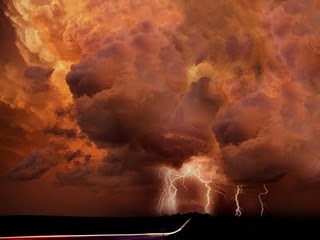



A Wild Saturday Evening. The reports above are a small subset of the damage reports that came in; numerous reports of 1" diameter hail (quarter-size, considered severe, large enough to cause minor damage). As many as 10,000 residents of the Twin Cities lost power - winds gusted over 60 mph with reports of tree limbs and powerlines downed. No tornado reports, just straight-line winds from severe thunderstorm downdrafts reaching the ground. Click here to see the full list of damage reports, courtesy of NOAA.
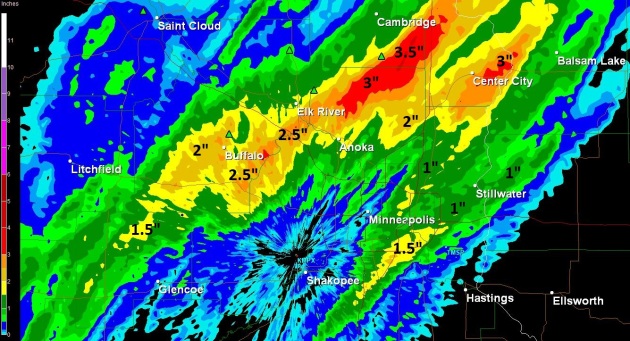
A Month's Worth Of Rain. The cool front sputtered and stalled as it passed over the Twin Cities metro late yesterday, a wave of low pressure rippling up the front causing this tug-of-war to play out for an extended period of time, increasing rainfall amounts as several waves of strong/severe storms swept across the metro. National Weather Service Doppler estimates show a band of 1-2" rain from Prior Lake into Minneapolis and St. Paul (where 1.75" diameter hail fell). The heaviest amounts fell from Buffalo to Elk River, Anoka County on up to Cambridge and Center City, where Doppler estimates suggest some 2-4" amounts, nearly a month's worth of rain overnight.

Saturday Storm Reports. Click here for an interactive map from Ham Weather, data from NOAA.
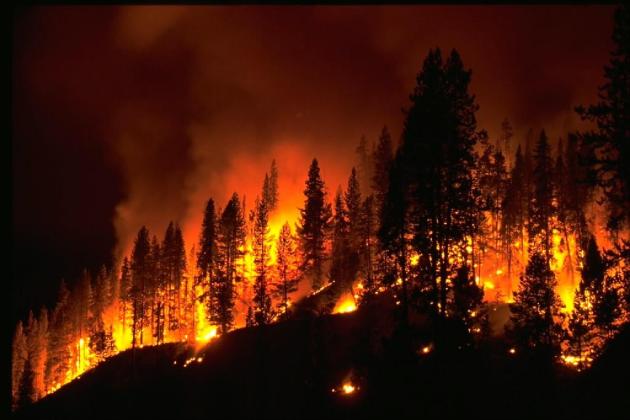
"Wally Covington runs the Ecological Restoration Institute at Northern Arizona University. Covington calls fires that grow to be more than 100,000 acres "mega fires." And he says it may not be this year, but we are bound to see more of them. He says the Wallow Fire was an example of what happens when global climate change meets forests choked with trees. "These factors then conspire to set up a very explosive situation, so it’s really a crisis," Covington said." - from an Arizona Public Media story; details below. Photo: NOAA.
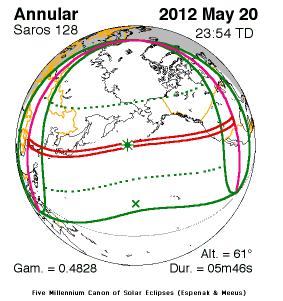


Timing The Eclipse. Times above are Universal Time, data courtesy of NASA.

More Eclipse Facts. From timeanddate.com: “The dark strip in the center indicates the best locations for viewing the eclipse. Here, the Moon moves centrally in front of the Sun. The eclipse is also visible in the areas that are shaded red, but less of the Sun’s disk is obscured. The fainter the red shading the less of the Sun’s disk is covered during the eclipse.”

We Have A Shot: Maximum Solar Eclipse at MSP is 7:19 pm. Skies may be partly cloudy this evening - a gentle reminder not to even think of looking at the sun directly (and risk going blind). Credit here.
* Google has some good tips and tools for viewing the solar eclipse here.

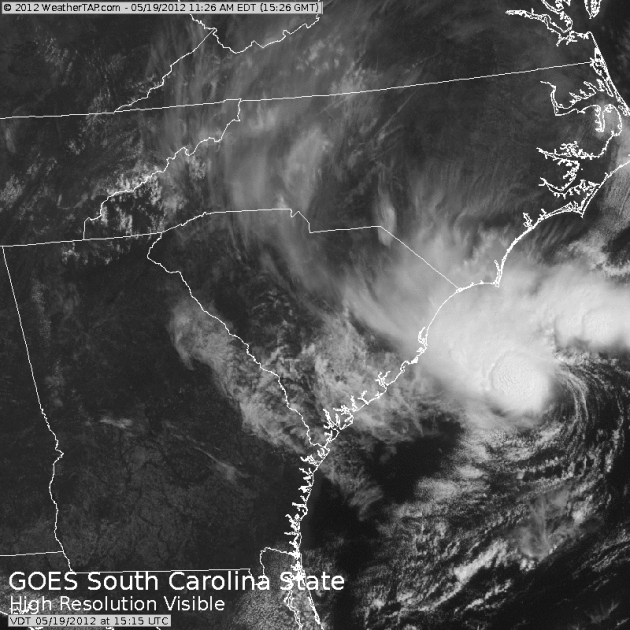
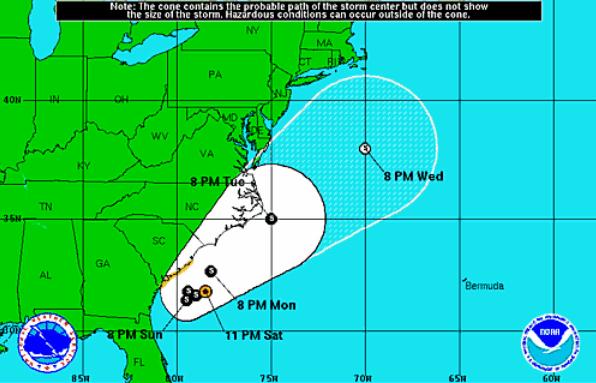
Alberto's Projected Path. The first tropical storm of 2012 is forecast to do a few loops off the South Carolina coast, before turning northeast, brushing Wilmington, the aptly named North Carolina town of Cape Fear and Cape Hateras by 8 pm Tuesday, then veering out to sea. Source: NHC.
* According to @senorpepr only 76 storms since 1851 have formed earlier than Alberto and is the earliest storm to form since Andrea in 2007.
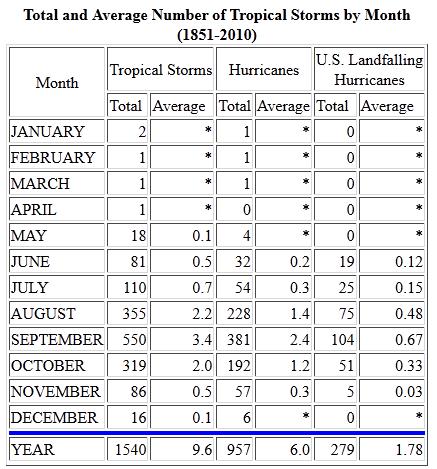
Hurricane Frequency By Month.
May tropical storms and hurricanes are quite rare; here's a summary of
tropical systems, by month, courtesy of Chris Landsea and NOAA: "This table shows the total and average
number of tropical storms, and those which became hurricanes, by
month, for the period 1851-2010. It also shows the monthly total
and average number of hurricanes to strike the U. S. since 1851."

Is Your Name On The List? Here are the hurricane names for 2012 to 2017, courtesy of NOAA's NHC.
There will never be another Hurricane Andrew, Hugo, Katrina or Irene -
those names have been retired, out of respect for the victims.
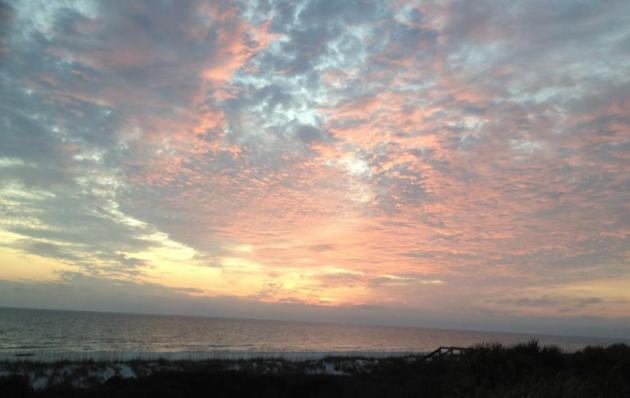
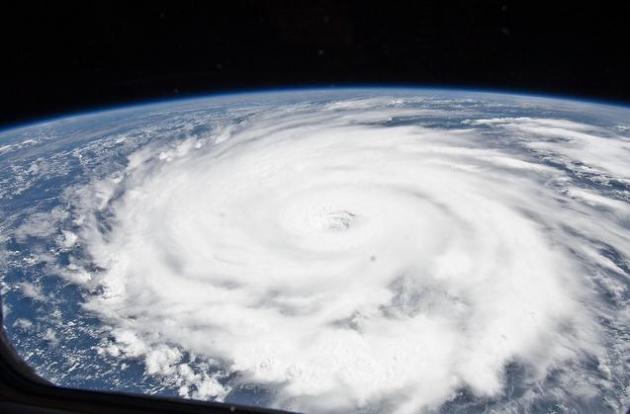
More Tropical Storm/Hurricane Factoids:
During the month of May, there has been 18 TS, 4 Hurr, and 0 landfalling Hurr (thru 2010): http://www.aoml.noaa.gov/hrd/
Previous formation charts including the month of May (trying to investigate the previous May 21-31 storm off of SC): http://www.nhc.noaa.gov/climo/
Tropical Cyclone Stats by state: http://www.nc-climate.ncsu.
List of NC Hurricanes by month: http://en.wikipedia.org/wiki/
A Wild Temperature Ride In Duluth. Check out this story from The Duluth News Tribune; here's an excerpt: "....According to the National Weather Service, the high temperature at the Duluth International Airport was 87 degrees, setting a record for the date. The previous record was 85, set in 1970, 1978 and 1998. While areas over the hill were baking under the sun, Park Point was staying cool with temperatures in the 50s. At 5 p.m. it was 87 at the airport and 54 on Park Point, a difference of 33 degrees over a distance of about 10 miles."



| Total Records: | 1134 |
| Rainfall: | 357 |
| Snowfall: | 2 |
| High Temp: | 335 |
| Low Temp: | 51 |
| Low Max Temp: | 64 |
| High Min Temp: | 325 |

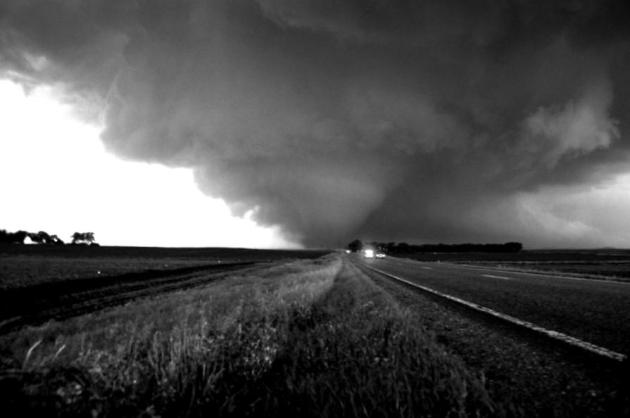
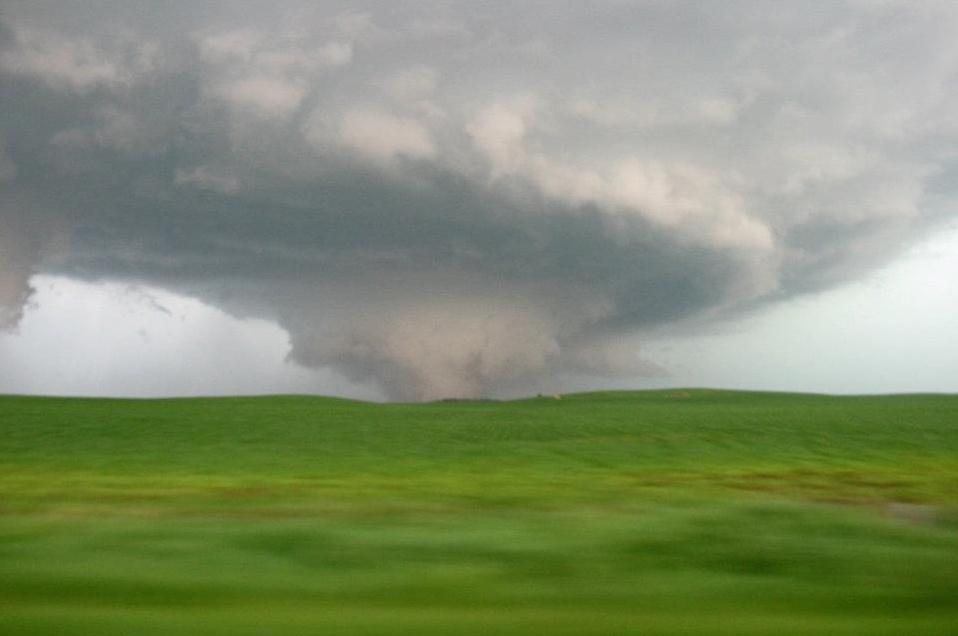
1). The “urban heat island” protects the Twin Cities metro from the most violent tornadoes?
A). True.
B). False
2). Riding out a tornado in your basement? The safest place statistically is:
A). Southwest corner
B). Under the stairs.
C). Huddled next to a window.
3). No basement? Which would be the best room to seek protection from a tornado?
A). Kitchen.
B). Attic.
C). Bathroom.
D). Interior closet.
4). Which of the following will wake you up at 3 am if a tornado is moving into your county?
A). Sirens.
B). TV
C). NOAA Weather Radio.
D). Mother In Law.
5). There is a local “Tornado Alley” in the Twin Cities that runs from Lake Minnetonka across the north metro, true or false?
6). Which of the following are “tornado tip-offs”?
A). Large hail.
B). Wall cloud.
C). Green/yellow sky.
D). Flooding rains.
7). Out of 100 thunderstorms, how many will, on average, go on to spawn a tornado?
A). 50.
B). 10
C). 1
8). There is solid evidence that climate change is producing larger, violent tornadoes? True or false?
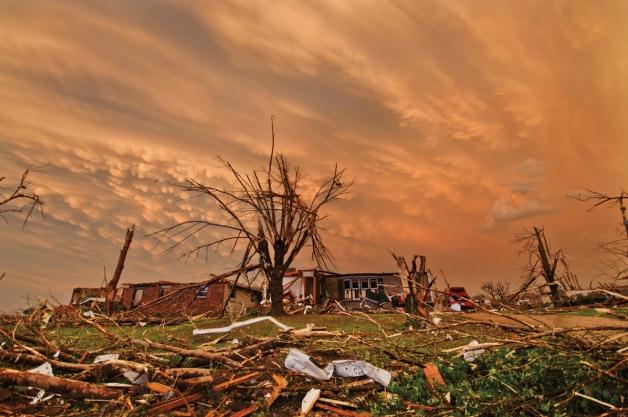
"Tornado-Wise" Answer Key:
1). Answer: (B). False. Large tornadoes are not deterred by slightly warmer, drier conditions over the metro area.
2). Answer: (B). Debris sometimes falls into the
southwest corner. The safest spot is under the stairs, under a heavy
table or workbench, if available.
3). Answer: (C) (D). The smaller the room, the better. The more walls between you and the tornado, the better.
4). Answer: (C). NOAA Weather Radio is the only device that will set off an alarm, 24/7, when your county is threatened.
5). Answer: False. In the last 40-50 years more
tornadoes have been observed across north/west suburbs, but a longer
look back at tornado data shows no preference as to where tornadoes
touch down.
6). Answer: (A)(B)(C). A green/yellow sky may be
the result of large hail suspended overhead. The larger the hail the
stronger the T-storm updraft, the greater the potential to spin up a
tornado.
7). Answer: (C). On average 10% of T-storms are severe, less than 1% will ever spin up a twister.
8). Answer: False. We’re seeing more small
tornadoes, but there is no solid link between a warmer, wetter
atmosphere and large EF-3+ tornadoes.


3-5 correct? Tornado-savvy, on the right track.
Fewer than 2 right? Are you
visiting from Manhattan...or Fiji? Welcome to Minnesota - not exactly
Tornado Alley, but definitely "Tornado Cul-desac". In 2010 Minnesota
experienced 145 tornadoes, most in the USA that year.

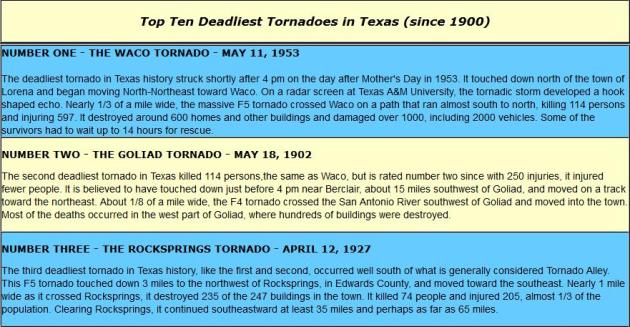
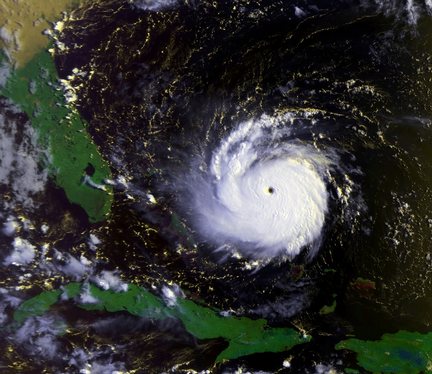
20 Years Later, Lessons From Hurricane Andrew. Here's an excerpt of a terrific audio story from Marketplace: "...Now to Florida where emergency officials and weather forecasters have been meeting this week for the Governor's annual Hurricane Conference. This year's meeting comes exactly 20 years after Hurricane Andrew caused $26 billion in damage in South Florida. Marketplace's Nancy Marshall-Genzer reports.
Nancy Marshall-Genzer: Hurricane Andrew morphed into a monster overnight, buzz-sawing through south Florida. Frantic meteorologists waited impatiently for slow-as-molasses printers to spit out smudged hurricane maps.
But things have changed."
* Satellite image above courtesy of NASA.

* More information from CTIA:
There are three different kinds of alerts:
- Presidential Alerts – Alerts issued by the President or a designee;
- Imminent Threat Alerts – Alerts that include severe man-made or natural disasters, such as hurricanes, earthquakes, tornadoes, etc., where an imminent threat to life or property exists; and
- AMBER Alerts – Alerts that meet the U.S. Department of Justice’s criteria to help law enforcement search for and locate an abducted child.
AT&T
Wireless Emergency Alerts Information
Cellcom:
WEA Main Page
Sprint Nextel Corporation:
Wireless Emergency Alerts Information
T-Mobile USA:
Wireless Emergency Alerts Information
U.S. Cellular:
Wireless Emergency Alerts | U.S. Cellular
Verizon Wireless:
Wireless Emergency Alerts Information

Photo credit: "The Hewlett fire burns to the edge of Seaman Reservoir in Poudre Canyon near Ft. Collins, Colo., on Thursday. Hundreds of firefighters worked to combat the growing blaze. (R.J. Sangosti / The Denver Post / May 18, 2012)."
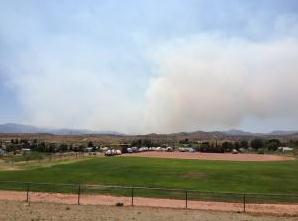
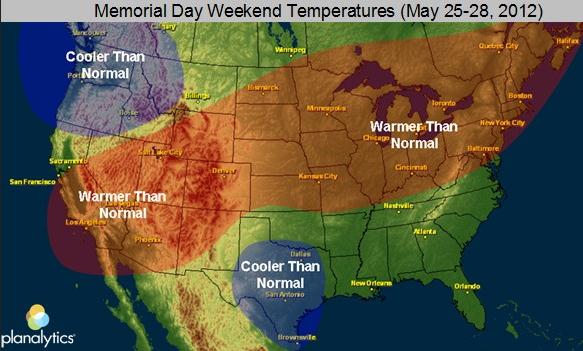
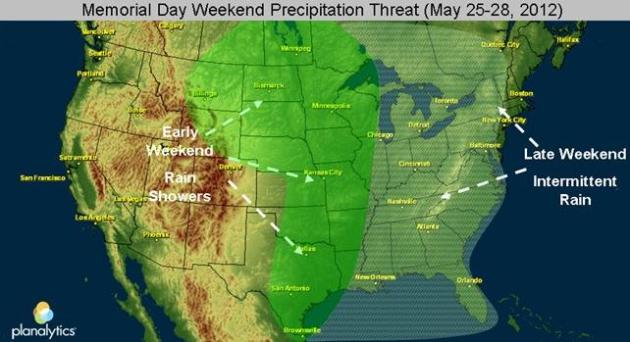
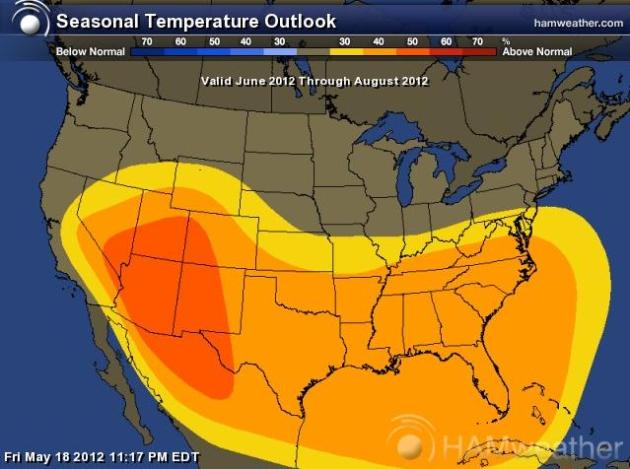

Pennsylvania Passes Flooding Law. I found this interesting: "Pennsylvania passed a law
that if someone drives around a flood barricade, the fine is $250. If
the driver’s car stalls and emergency responders are needed, the fine
is no more than $500 and the driver’s license will be suspended for no
more than 90 days. The law passed with an unanimous vote of 197- 0. The
bill can be seen in the link below."




The Man from Mad Men
"Simon Mansell of TGB Advertising gave an up-close view of who spends what on Facebook. TGB is one of the social media company’s advertising agencies. TGB has over 100 “big” Facebook customers, each of whom spend over a $1 million a year on Facebook ads. TGB handles the advertising campaign, which includes developing the campaign and buying space on Facebook’s website."

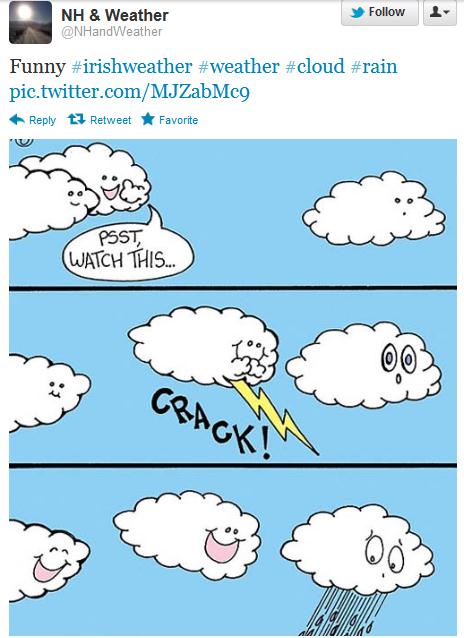
A Timely Weather-Cartoon. Thanks to IrishWeather for passing this one along, via Twitter.

The "Canine Hawaiian Shirt". I was thumbing through my latest Hammacher Schlemmer catalog yesterday and came across this item. Is it just me, or is this another sign of the pending Apocalypse? Do people really buy this crap? Amazing. But if you're interested, read on: "Made in the Hawaiian islands, this is the genuine aloha shirt that reflects a canine's carefree, waggish spirit. Long synonymous with summer time leisure, the modern Hawaiian shirt was created in the early 1930s by a Waikiki cloth merchant from leftover kimono fabric. This shirt's lightweight 100% cotton fabric displays classic Polynesian motifs favored by locals, in contrast to the loud prints found on common aloha wear."
I'd like 12 of these please, in various sizes. Just to annoy my dog.

The Classic Manual Typewriter. In the very same catalog, for the tidy sum of only $119.95 you can order a typewriter, which will absolutely make you the most popular (luddite) in the office. It would be fun to order one of these - establish a "no computer" edict. "Everyone is going back to typewriters, slide rules and bell bottoms, effective immediately!" My favorite part of this...it's an EXCLUSIVE. Right. It gets even better: "This is the classic manual typewriter that recalls the thoughtful, well-written correspondence of yesteryear. Devoid of technological crutches such as spell-check and deletion, each of its 44 keys require a firm, purposeful touch for a steady click-clacking cadence that encourages the patient, considered sentiment of a wordsmith who thinks before writing. Not refurbished, it is a newly manufactured machine."
* Sorry - I think I got a little too much sun yesterday...
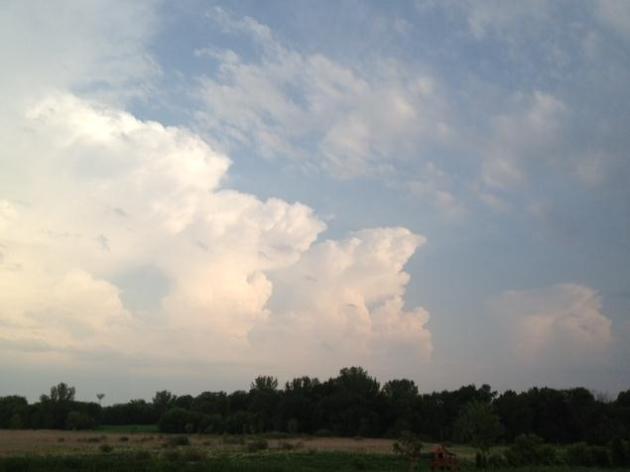
Towering Thunderheads. This is what the line of storms that came roaring through the metro late Saturday looked like from Cologne, over the far southwest suburbs. Thanks to WeatherNation TV meteorological Bryan Karrick for passing this along.

Hacker Nation
Did you hear about the Facebook IPO? Thought so.
Detractors refer to it as "Faceplant", but a billion users can't be
wrong. Or is it the next AOL? Who knows.
Developers love to
"hack", throwing new code against the wall to see what sticks. Their motto: if
you're not failing - it means you're not really trying. Failure is a right of
passage in Silicon Valley. Venture capitalists know less than 1 in 10 of their investments will pay off, more than making
up for the duds.
Did Mr. Zuckerberg do it for the money? Doubtful. He
had a big dream for transforming the world. "If you set out to truly serve others the profits will come."
When I
speak to corporations about my entrepreneurial ups and downs I remind them to
stay flexible - and keep a hacking mindset. If you don't cannibalize your own products a competitor will do it for you.
The
first
tropical storm of 2012, Alberto, thrashes the Carolina coast today,
while
we enjoy a 60-degree cool front. Showers linger much of the day as
temperatures fall through the 60s into the 50s - some clearing is
possible in time for this evening's partial (annular) solar eclipse, but
no guarantees. Come to think of it there are never any guarantees (except sunrise and sunset). A flawless Monday leads to midweek
warming, the best chance of T-storms Wednesday night & Friday.
The
ECMWF model is hinting at 90s for Memorial Day weekend, the hottest in years?
Climate Stories...
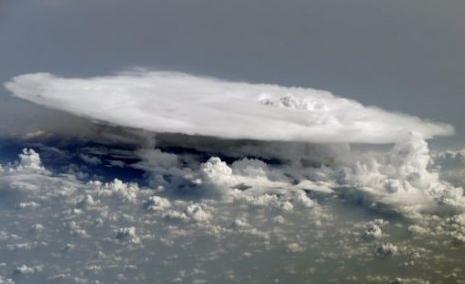
Climate: Study Says Climate Change Makes Thunderstorms Bigger and Stronger - And They're Trapping More Atmospheric Heat. Here's an excerpt from a story at The Summit County Citizens Voice: "Taking a close-up look at thunderclouds enabled researchers to identify a new factor in the global warming equation — high altitude air pollution that spreads out the top of anvil-headed thunder clouds and traps more heat, especially at night. How much the warming effect of these clouds offsets the cooling that other clouds provide is not yet clear. To find out, researchers need to incorporate this new-found warming into global climate models. “Global climate models don’t see this effect because thunderstorm clouds simulated in those models do not include enough detail,” said Jiwn Fan, a climate researcher with the Department of Energy’s Pacific Northwest National Laboratory."
Photo credit above: ISS, International Space Station.

Experts: Climate Change Makes Big Wildfires Inevitable. Fire season is getting off to an early start, a possible omen of what's to come (historically fire season peaks in late summer and early fall). Here's a snippet of an important story from Arizona Public Media: "Several large wildfires continue to burn in Arizona, Nevada and New Mexico. Severe drought led to an aggressive start to this year’s fire season. It’s Chuck Maxwell’s job to predict how intense this year’s fire season might be. He’s a meteorologist working for the Southwest Coordination Center in Albuquerque that tracks all kinds of fire information for federal government and state agencies. He looks at several factors including the abundance of dry grass, the amount of snowpack and how severe the drought is. "Drought really makes the changes in weather much more of a hair trigger kind of situation," Maxwell said. In other words, an early snowmelt, a very dry landscape, and one lightning strike can set off a massive fire."
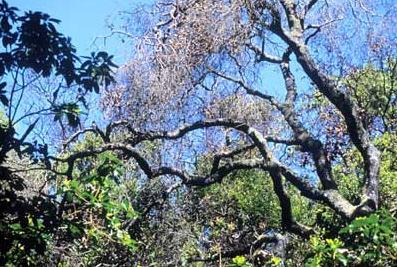
Impact Of Climate Change On Forest Diseases Assessed in New U.S. Forest Service Report. An update from the USDA: "A report being released by the U.S. Forest Service examines the impact of climate change on eight forest diseases and how these pathogens will ultimately affect Western forests. The report analyzed a range of future conditions from warmer and dryer to warmer and wetter. The first scenario, which is considered more likely for most regions in the West, includes dryer and hotter summers. These conditions will increase the risk of wildfires and warmer winters allowing insect outbreaks, like the bark beetle, which has destroyed millions of pine trees in Colorado, to continue."
Photo credit above: "An oak succumbs to Sudden Oak Death/US Forest Service photo."

NFU: Climate Change Adaptation Key To Ag Success. A certain amount of warming is already in the pipeline, at least another 1-2 F, even if we could magically stop all greenhouse gas emissions tomorrow. Adaptation is going to be a huge industry in the 21st century; an opportunity to make crops more weather-resistant, able to withstand greater swings in moisture and temperatures. Here's an excerpt of an interesting article from cattlenetwork.com: "National Farmers Union (NFU) submitted comments to the U.S. Environmental Protection Agency (EPA) this week regarding the agency’s Draft National Water 2012 Strategy: Response to Climate Change. The agricultural organization emphasized the need for agriculture to adapt to changing environmental conditions, particularly as it relates to water. “Climate change adaption is critical for the continued productivity of the agriculture sector, specifically as it relates to water quality and quantity,” said NFU President Roger Johnson. “Given the proper incentives, family farmers and ranchers will be valuable partners in addressing the challenges that result from a changing climate. Family farmers and ranchers have historically been our best soil and water conservationists when given the economic incentives and flexibility to do so.”

Photo credit above: Newsweek.
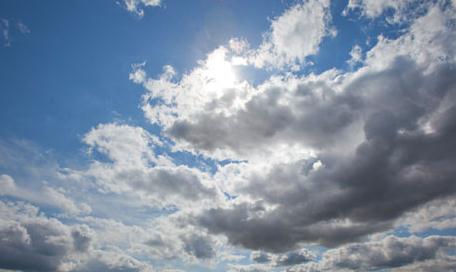
Photo credit above: "The Spice project planned to spray particles into the stratosphere, creating clouds to mitigate global warming. Photograph: Graham Turner for the Guardian."



The Effects Of Global Warming Being Felt In The U.S. I was a little surprised (pleasantly so) to see this post at oilprice.com: "Turning a blind eye to the realities of global warming is a dangerous game. Scientists predict that sea levels will rise anywhere from 7 inches to 78 inches in the next 100 years (depending, in part, on how much we do to curb global warming pollution), which means that in a few generations, nearly five million people who currently live within 4 feet of high tide could be in the same boat as the residents of Norfolk. New research shows that global warming will double the chance of a hundred-year flood occurring in many locations within the next 18 years. In some areas, the chance is tripled."
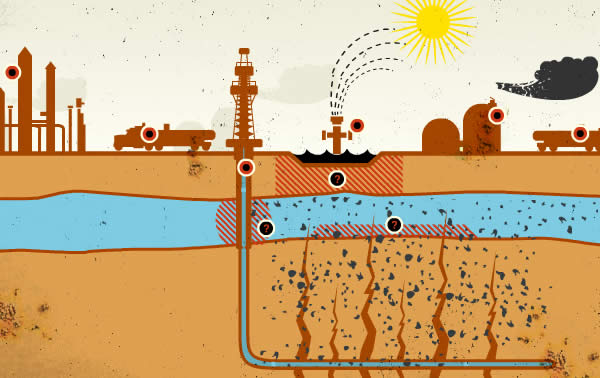
Graphic credit above: 8020vision.com.
